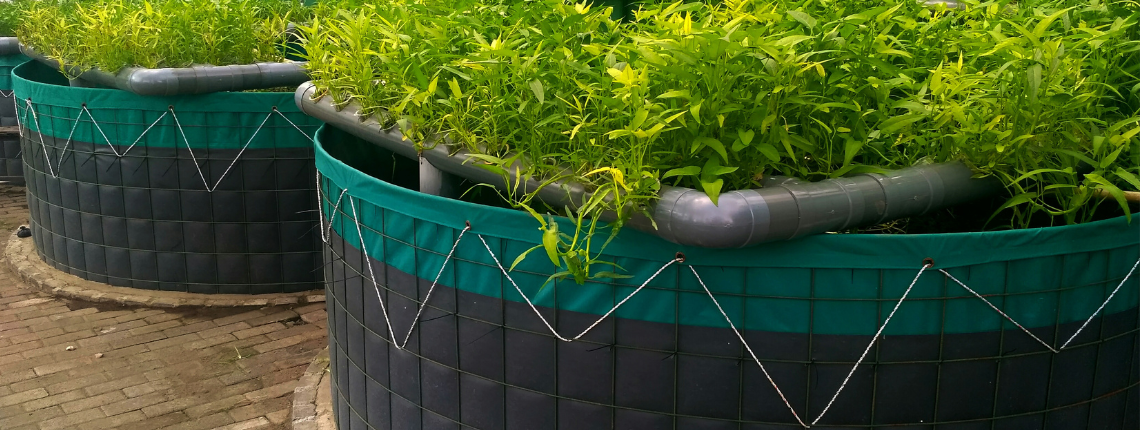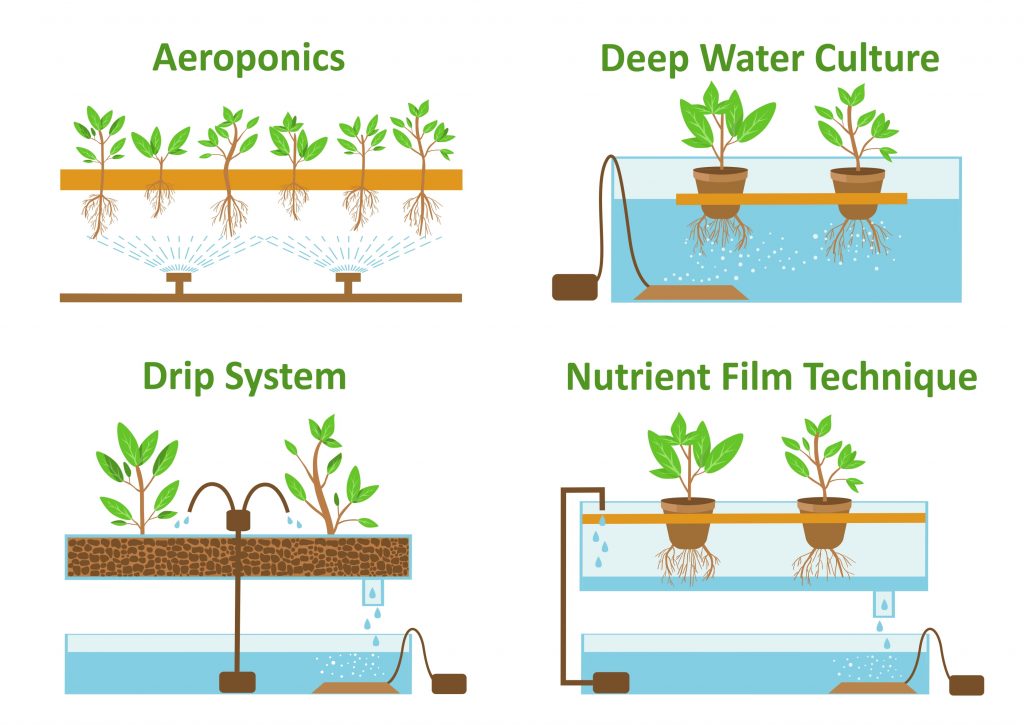January 05, 2023
Air Pumps for Hydroponics
Aeration is an essential component of Deep-Water Culture (DWC) hydroponics systems

Fun Facts:
Although hydroponics is considered a modern form of farming, the method was used by the Aztecs in Lake Tenochtitlan and even by the Babylonians several hundred years BC.
What is hydroponics?
Hydroponics is the technique of growing plants in nutrient enriched water instead of soil. The nutrient solution (includes such minerals as phosphorous, magnesium, nitrogen, and potassium) is recirculated in a closed loop system.
What are the benefits of hydroponics?
- High yield: hydroponics yields more calories per square foot. Plants can be placed closer together allowing for more plants or a smaller growing area
- Since hydroponics systems can be installed indoors, plants can grow in any climate throughout all seasons
- Hydroponics uses 90-95% less water than traditional farming methods because there is little evaporation and water is re-circulated in a closed loop system
- Vegetables tend to grow 25-50% faster than in conventional farming methods. Plants grow up faster because there is less of a root system
- Hydroponics does not rely on pesticides and is environmentally friendly
- There are no weeds, less pests, and less disease than conventional farming
Types of hydroponics systems:

There are six major types of hydroponics systems: wicking, deep water culture (DWC), nutrient film technique (NFT), ebb and flow, aeroponics, and drip systems. Although adding dissolved oxygen can be beneficial for each, the only type that requires aeration is DWC.
Aeration for deep water culture (DWC):
DWC – used by hobbyists, homeowners, and large commercial operations (FRT systems) alike – is one of the easiest yet most effective methods of hydroponics. Roots are suspended and submerged in water 100% of the time. Plants require oxygen for respiration. While they do get some through leaves, most of the oxygen is consumed through the root system. Therefore, without sufficient levels of oxygen in the water, the plant roots will drown and rot away.
Adding an aeration system to the DWC system is essential. Diffused aeration will enhance dissolved oxygen (DO) levels allowing for plant respiration while preventing the growth of pathogens. The aeration process also circulates water evenly distributing the nutrient enriched solution.
Diffused Aeration Systems:
Diffused aeration systems include an air pump (sits outside of the water), airline, and diffusers (s) that sit at the bottom of the tank. Fine bubble diffusers (typically 0.5- 3 mm bubbles) are recommended as they produce the most air bubbles and thus the most surface area on the bubbles for oxygen to transfer into the water. For more information on diffusers, check out the following article here.
There are many types and sizes of air pumps. Lesser duty aquarium style aerators can be used for small applications. For larger scale at home systems with several tanks or for commercial FRT systems, a heavy-duty pump is often needed. One of the most popular styles is the linear diaphragm air pump.
Linear diaphragm air pumps have been used for hydroponics for years. The design is built for 24/7, 365-day use and is lubrication and oil free. The pumps are energy efficient running on less electricity than an incandescent light bulb. Perhaps the greatest advantage of a quality linear diaphragm pump is that it is very quiet compared to most rotary style aerators.
HIBLOW Advantage:
HIBLOW invented the linear diaphragm air pump back in 1968 and is the gold standard. Most models run on 70 watts or less with a noise level below 40 dBa. HIBLOW pumps use only a few moving parts and therefore can be easily rebuilt in 20 minutes or less. With 2 rebuilds, the aerators can continuously run for up to 10-15 years (depending on the system pressure and model size). HIBLOW offers 3 different series (WG, XP, HP) with flow rates ranging from 20LPM up to 200 LPM.
More Pond Aeration Content
- What Size Air Pump Should I Buy?
- DIY Pond Aeration
- How to Calculate Backpressure
- What Type of Diffuser Should I Buy for My Pond?
- How Water Depth, Pipe Size and Diffuser Type Affect Longevity
- DIY Solar Pond
- For all HIBLOW pond aeration content click here
Author: Mike Miner